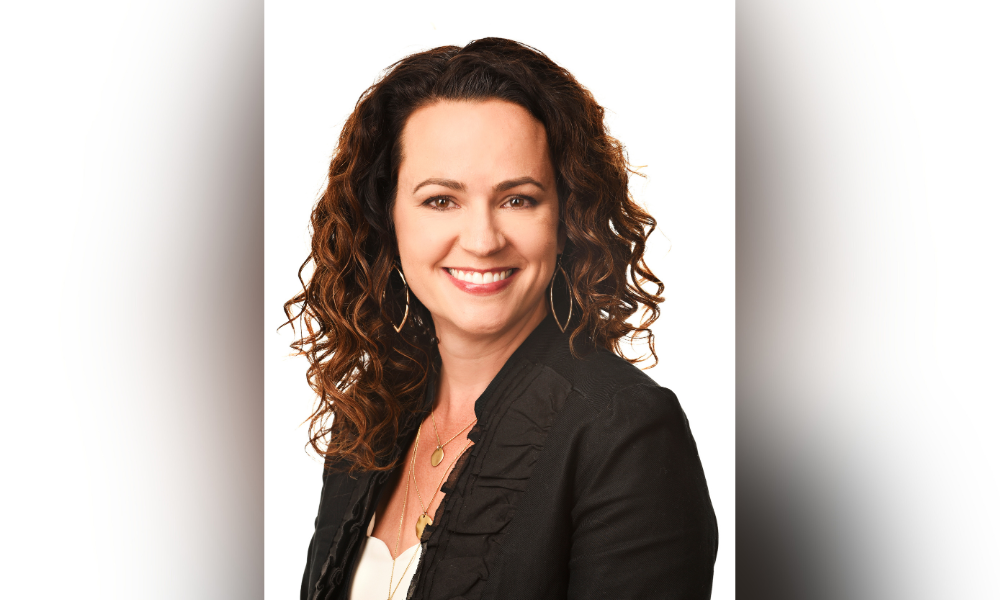Bridge loans are a powerful tool in her arsenal

With homeownership becoming an ever-elusive goal for many – what with high mortgage loans and escalating home values – loan originators are increasingly looking outside the box to help their clients achieve the dream.
Take bridge loans for example. A bridge loan is a type of short-term loan that can be taken out for as little as two weeks to three years pending on a borrower’s securing of larger or longer-term financing. Their use is on the rise amid a housing market beset by high mortgage rates and affordability issues that have made the American Dream of homeownership something of a dream deferred for many.
Among the proponents of bridge loans is Rebecca Richardson (pictured) of UMortgage. She keeps the financial instrument among her arsenal of tools to help her clients buy homes. The backdrop of inflation that has further exacerbated the toughness of the market has prompted her to showcase the tools at her disposal.
Flexibility adds to bridge loans’ appeal
“With the average down and closing costs around $20,000, how does the average person save up enough when everything is costing more due to inflation?” she asked rhetorically. Most buyers need at least 5% for their down payment and closing costs, she added.
But there’s a way to bridge from buying to selling without compromising one’s dream home, she said. Enter: Bridge loans.
“Bridge loans will typically let you borrow around 90% of what your home’s value is minus whatever your current mortgage balance is,” she explained. “The first step is applying for the bridge loan and confirm what amount you can get,” she said.
That’s when things get interesting and securing one’s dream home becomes that much more in focus.
“Then you will get qualified for the new homes, counting both your current mortgage, the bridge loan payment and the mortgage on the new home,” Richardson said. “Once you’re under contract, the loan process is as normal, other than using the funds loan as your down payment.”
This then triggers additional activity: “Once you’re in your new home, the next step is going to be to sell your old one – which will have to happen within six months,” Richardson said. “It’s at that point you’ll pay off your old mortgage and the bridge loan.”
Bridge loans have grown in popularity in the commercial rea estate space as well, according to a report by Matthews Real Estate Investment Services released earlier this year. Borrowing fees more than doubling since late last year, rising interest rates and the possibility of a recession have combined in adding to the growing appeal of bridge loans, the report found.
“Following another Fed rate hike, the commercial real estate market is feeling the pressure of rising capital expenses and smaller credit amounts,” the report reads. “With these higher interest rates and tighter underwriting criteria, the demand for short-term and gap lending solutions is becoming quite popular.”
The dynamics of a bridge loan adds to the financial instrument’s appeal: “In addition to their growing popularity, bridge loans are quick and have a high probability of execution,” the study’s authors wrote. “These loans accommodate lenders and borrowers and can be used as leverage on higher-risk investment scenarios. Short-term solutions are a persistent theme in the current state of the market. Several borrowers are opting to extend their bridge loans considering today’s market conditions in hopes that cheaper options will be available soon.”
Reconsidering closing costs
That’s not the only advice Richardson has been giving her clients lately, also reminding them that the seller of a home sometimes is able to pay for closing costs. “The amount they can pay depends on your loan type, but most times they can pay most – if not all – the closing costs,” she said.
Think about a side hustle
In this touch economic climate, she’s even taken to suggesting side hustles as another way to achieve homeownership. “While some programs don’t require down payment or you may be able to get down payment assistance, most buyers need at least 5% for down payment and closing costs,” she reiterated, invoking the $20,000 total many are hard-pressed to accumulate.
“With a part-time job or side hustle – whether working evenings, weekends or just a few hours here and there – every extra collar you earn brings you closer to being a homeowner.”
Want to make your inbox flourish with mortgage-focused news content? Get exclusive interviews, breaking news, industry events in your inbox, and always be the first to know by subscribing to our FREE daily newsletter.



